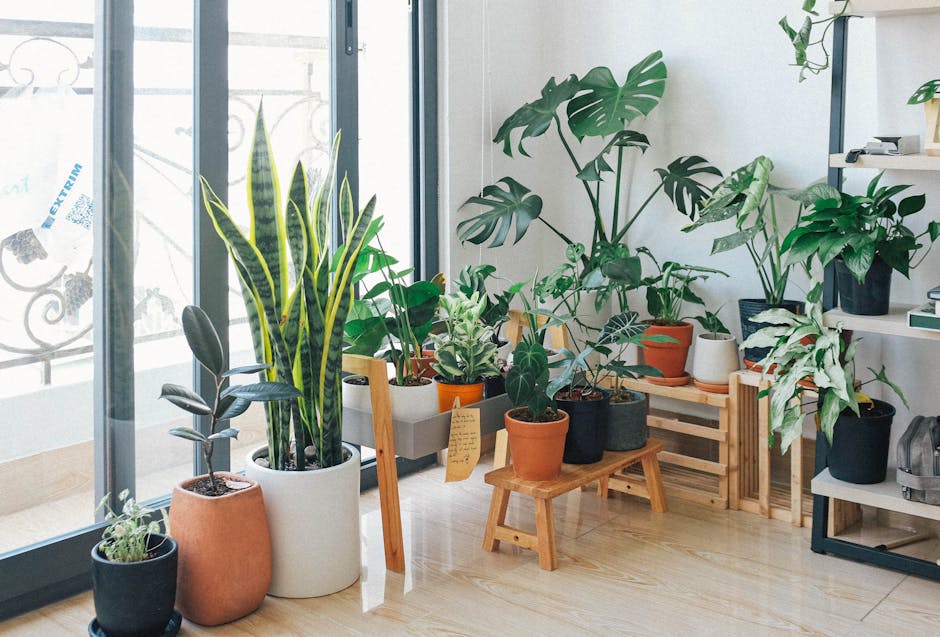Cultivate Urban Biodiversity: Create Eco-Friendly Micro-Habitats
Urban living doesn't have to mean sacrificing our environment. In fact, with innovative approaches to sustainable living and practical eco-friendly tips, we can positively impact our surrounding ecosystems right from our small spaces. This guide explores how you can cultivate biodiversity through micro-habitats in urban settings, just by using vertical gardens, bee hotels, and native plant selections. Whether you're a homeowner or a renter, these actionable strategies will enable you to contribute toward ecological balance and sustainability.
Embracing Urban Biodiversity: Why It Matters

In a world increasingly dominated by concrete, creating pockets of biodiversity in our urban environments becomes crucial. Urban spaces contribute to the phenomenon known as heat islands, where cities experience higher temperatures than surrounding areas due to human activities and built environments. By introducing biological variety, we can not only mitigate these effects but also provide essential habitats for various species, including beneficial insects and native flora. These small individual efforts accumulate into larger, impactful changes that rejuvenate urban ecosystems.
Did you know? According to a study by the National Academy of Sciences, incorporating ecology into urban design enhances natural habitats and increases visitor satisfaction in public spaces. This demonstrates that green initiatives not only foster biodiversity but also elevate the quality of life for city dwellers.
Vertical Gardens: Making Use of Every Inch

One of the most effective ways to create a micro-habitat in your urban space is through vertical gardening. This spectacular technique utilizes wall surfaces, fences, and balcony rails to grow a diverse range of plants while saving space.
Getting Started with Vertical Gardens

-
Choose the Right Structure: Opt for trellises, wire grids, or modular planting systems. Vertical gardens can even be DIY projects using repurposed wooden pallets.
-
Select Biodiverse Plants: Incorporate native plants alongside edible options. This enhances your garden's ecological value. Native plants typically require less water and are more resistant to local pests.
-
Creating Rainscapes: Ensure your vertical garden has an integrated watering system, such as drip irrigation, to minimize water waste while promoting healthy plant growth.
Maintenance Tips

Caring for a vertical garden may seem daunting at first, but with a routine in place, it becomes manageable:
- Conduct regular inspections for pests.
- Prune plants to encourage air circulation and growth.
- Use organic fertilizers to enrich the soil without harming local wildlife.
For more insights on creating an enriching space, check out this post that dives deeper into nurturing indoor biodiversity.
Bee Hotels: A Buzzing Addition to Your Micro-Habitat

Pollinators, especially bees, play a vital role in our ecosystems. However, urbanization has driven many species to the edge of extinction. Creating bee hotels not only supports these crucial insects but also enhances your garden's productivity.
Building and Maintaining Bee Hotels

-
Design the Structure: Use wood blocks drilled with various-sized holes. Ideal dimensions range from 2mm to 10mm. This provides homes for solitary bee species.
-
Strategic Placement: Position the hotel in a sunny location, sheltered from harsh weather, to attract visitors.
-
Pure Materials Only: Avoid treated wood which may contain harmful chemicals; instead, utilize untreated wood and natural building materials.
Monitoring Bee Activity

Keep an eye on your hotel to observe which species have settled in. This can provide invaluable data on the local bee population and help inform further gardening choices. Engaging with local biodiversity groups can also enrich your understanding and action, so consider connecting with initiatives like those discussed in this article.
Native Plant Selections: Championing Local Flora

Transform your urban micro-habitat by prioritizing native plants that thrive in your area's specific climate and ecosystem. Native plants not only require less maintenance but also support local wildlife – think songbirds, pollinators, and numerous other beneficial organisms.
Steps to Select and Source Native Plants
-
Research Local Flora: Familiarize yourself with the native species in your region. Resources like local extension services or native plant societies can provide invaluable guidance.
-
Diverse Plant Grouping: When you select native plants, include a mix of flowers, shrubs, and grasses. This diversity attracts a wide range of wildlife, promoting ecological balance.
-
Create Attractive Habitats: Consider adding features like small ponds, native grasses, or piles of rocks to create a multi-layered habitat.
Implementing such native solutions can not only mitigate the urban heat effect but also support local wildlife. To dive deeper into sustainable practices through your garden, explore urban farming techniques in greater detail.
Mitigating Urban Heat Islands with Green Planning
Incorporating green spaces, like vertical gardens or vibrant native plant patches, plays a vital role in reducing urban heat islands. Plants transpire water, significantly cooling the air above them and combating temperature spikes.
Designing for Sustainability
-
Incorporate Green Roofs: If you have a roof terrace or flat roof, consider covering it with greenery. This can include plants, shrubs, or even small trees.
-
Use Climate-Resilient Plants: Select plants that can survive in extreme weather conditions, ensuring your green spaces thrive through seasons.
-
Collaborate with Neighbors: Consider organizing community efforts to cultivate shared green areas, benefiting entire neighborhoods through collective action.
Next Steps: Begin Your Urban Transformation Today
Now that you're equipped with innovative solutions to cultivate biodiversity in your urban space, it's time to take action. Start small, integrating these eco-friendly tips into your daily life.
-
Assess Your Space: Evaluate the areas available in your home, whether a balcony, patio, or indoor space.
-
Make a Plan: Choose one initiative to implement at a time—be it a vertical garden or a bee hotel.
-
Engage Your Community: Share your plans with neighbors. As an empowered community, not only can you create flourishing micro-habitats but also inspire others to follow suit.
Final Thoughts: Your Urban Oasis Awaits
Creating biodiverse micro-habitats in small urban spaces is not only a hopeful response to ecological crises but a necessary one. Your efforts, no matter how small, play an integral role in shaping ecological balance and sustainability in cities. By incorporating vertical gardens, bee hotels, and selecting native plants, you are actively participating in the solution.
Embrace the challenge and joy that comes with cultivating your little urban oasis! The diverse life it attracts will enrich not just your home, but also your spirit and connection to nature. Every green effort counts, and together, we can transform our cities into thriving ecosystems.


